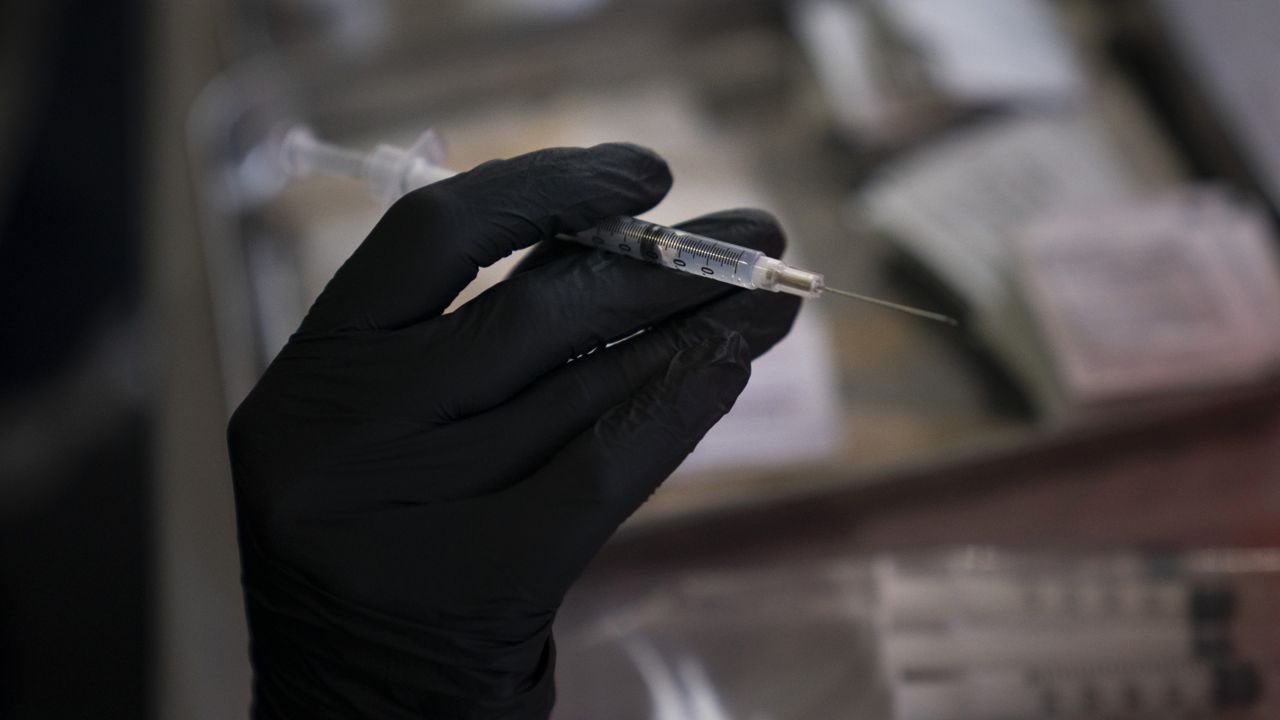SANTA ANA, Calif. (CNS) — Orange County's COVID-19 hospitalizations remained relatively flat Thursday with a slight uptick in the patient count, continuing a slowdown of the summer delta variant-fueled surge.
Hospitalizations ticked up from 368 Wednesday to 371 Thursday, with the number of patients in intensive care dipping from 103 to 102, according to the Orange County Health Care Agency.
"Positivity in Orange County continues to decline as vaccination rates increase," Orange County Supervisor Katrina Foley said on a media briefing call Thursday with state Sen. Josh Newman, D-Fullerton.
"Our hospitalizations remain flat," Foley said. "We had about the same number yesterday ... But overall Orange County is looking good."
Newman, who chairs the senate special committee on pandemic emergency response, said statewide, the infection rate was slowing.
"All the trends are vaguely encouraging," Newman said. "But the curve isn't so steep that we can be as optimistic as we'd like."
It appears the delta surge "has scared some portion of the vaccine hesitant" to get inoculated, Newman said.
"Prior to this recent surge it was steadily on the downswing," Newman said of vaccinations.
Statewide, about 82% of Californians have received at least one shot, Newman added.
"I have some concern about second-dose abandonment," Newman said of the two-dose Pfizer and Moderna vaccines.
"Your immunity is not what it could or should be if you don't get the second shot," Newman said.
Lawmakers are eyeing legislation that would increase "restrictions" to those who remain unvaccinated, including considering taking Gov. Gavin Newsom's executive orders requiring vaccination of healthcare workers and first responders and making them law.
Newman, a veteran of the U.S. Army from 1986-1990, recalled how he was commonly vaccinated while in the service.
"When I was in the military, we got shots all the time," Newman said. "I had over 30 vaccinations in a relatively short time ... so we got vaccines for things I frankly never heard of."
He recalled getting vaccinated for various variants of the plague.
"Nobody questioned it," he said.
The weekly averages, released on Tuesdays, showed that the county's case rate per 100,000 residents dropped from 16 to 15.3, while the testing positivity rate fell from 5.4% to 4.7%.
The county's Health Equity Quartile positivity rate, which measures progress in the county's low-income communities, dropped from 5.8% to 5.1%.
"Those are all good," Andrew Noymer, an epidemiologist and UC Irvine professor of population health and disease prevention, told City News Service on Wednesday. "The test positivity is very important and I like to see that dropping. That's a kind of leading indicator so I'll be unhappy if that goes sideways."
The county had 21.6% of its ICU beds available and 64% of its ventilators.
The county logged 11 more COVID-related deaths Thursday, raising the cumulative total to 5,337. Four of the fatalities were in September, raising the death toll for this month to 12 so far.
The seven other fatalities occurred in August, raising the death toll for last month to 132.
That figure stands in stark contrast to the rest of the summer.
The death toll for July was 22, 18 in June, 23 in May, 45 in April, 199 in March, 615 in February, 1,579 in January — the deadliest month of the pandemic — and 975 in December, the next deadliest.
The OCHCA also reported 326 new infections Thursday, raising the cumulative total to 292,450 since the pandemic began.
There has been a recent jump in the number of infected inmates in the county's jails, but nowhere near what it was like during an outbreak in the winter wave in December.
The number of infected inmates jumped from 28 earlier this week to 50 on Thursday with 39 in general population and 11 from newly booked inmates, said Assistant Sheriff Joe Balicki.
The rise in cases appears to be isolated to a dorm in the Men's Central Jail in Santa Ana and half of a barrack in the Theo Lacy Facility in Orange, Balicki said.
Sheriff's deputies are working closely with Orange County Health Care Agency officials on contact tracing and testing to tamp down the spread, Balicki said. Inmates are put into medical isolation if they test positive.
"In the past, these mitigation efforts worked very well for us," he said.
About 45% of the jail population is inoculated, Balicki said. Every inmate is offered a vaccine when booked and they are continued to be offered a shot during medical calls, he added.
Many of the positive tests are breakthrough infections of inoculated inmates, Balicki said. Many of the inmates who do test positive are asymptomatic.
Nine sheriff's employees are at home with infections.
The number of fully vaccinated residents in the county increased from 2,043,693 last week to 2,069,128 as of Thursday. That number includes an increase from 1,908,595 to 1,932,614 of residents who have received the two-dose regimen of vaccines from Pfizer or Moderna. The number of residents receiving the one-dose Johnson & Johnson vaccine increased from 135,098 to 136,514.
There are 220,138 residents who have received one dose of Pfizer or Moderna vaccines.
According to the OCHCA, the largest distributor of inoculations is the agency, at 27.10%. CVS has dispensed the second most in Orange County at 18.10%. Walgreens has doled out 6% of the shots, just ahead of Kaiser Permanente at 5.6% and UC Irvine Health at 2.8%.
Walmart has inoculated 1.8% of Orange County residents, Safeway, Vons and Pavilions have doled out 1.20% of shots and the Families Together of Orange County has dispensed 1.1% of shots. All other health care providers were under 1%.
The county's case rate for fully vaccinated residents as of Sept. 11, the latest figures available, was 4 per 100,000, but 22.9 per 100,000 for the unvaccinated.
